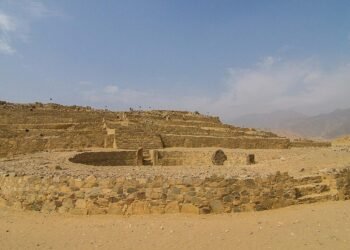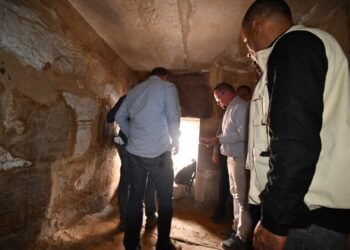Archaeologists have recently uncovered an extraordinary collection of life-sized camel carvings in the arid landscapes of Saudi Arabia. These rock carvings, which depict an extinct species of camels, have unveiled a window into the enigmatic Neolithic era in this region.
The monumental artwork, discovered near the southern edge of the Nefud desert, is part of a broader exploration of the prehistoric life of northern Arabia. Known as the Sahout site, this remarkable collection of life-sized camel carvings is the result of a collaboration between international archaeologists.
While the Sahout site was already recognized by researchers, a more detailed examination uncovered a multitude of ancient carvings, including images of camels that are now extinct but once roamed the vast deserts of the Arabian Peninsula.
One of the most fascinating aspects of this discovery is the recognition that the carvings were not created by a single group or during a specific period; instead, they were crafted over time, with various artists adding their contributions to the stone canvas. As different groups created new carvings, they often enhanced or overlaid the existing ones, revealing an evolving artistic style over time.
To ensure the preservation of their intricate work, the creators chose to carve the images into crevices, a deliberate strategy that has successfully preserved these remarkable carvings in the harsh desert environment for millennia. The presence of other materials in the same area, dated to approximately 8,000 years ago, offers valuable context for this incredible find, hinting at the extensive history of this region.
Detailed analysis of the artwork provides important clues about the techniques used by these ancient artists. It is believed that they used stone tools, particularly those made from chert, to painstakingly carve the images into the rock. The process would have required considerable time and effort, with some of the carvings taking up to two weeks to complete. The evidence also suggests that the creation of these images might have been a communal endeavor, underscoring the significance of camels in the lives of these ancient people.
Earlier discoveries in the Camel Site in northern Saudi Arabia featured large rocks etched with life-sized camel images, further expanding our understanding of ancient civilizations in this area. In Al-Jouf province, a “parade of life-sized camels” was uncovered five years ago, contributing to a growing list of archaeological sites in Saudi Arabia featuring such extraordinary features.
These ancient carvings, often created by different groups over extended periods, have the potential to revolutionize our understanding of prehistoric cultures in the region.






















